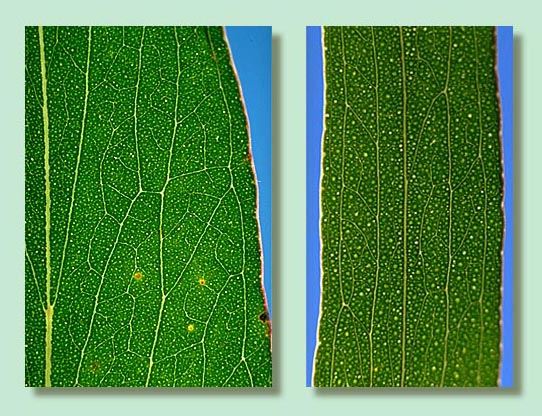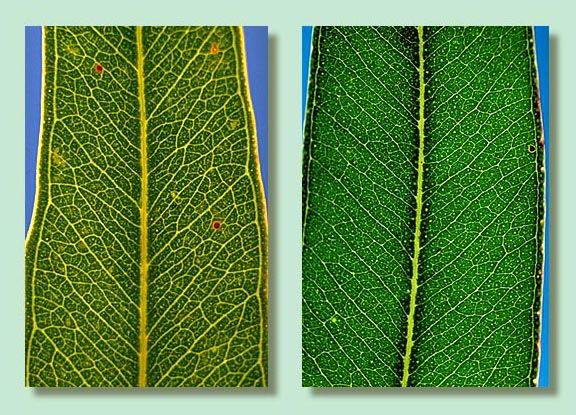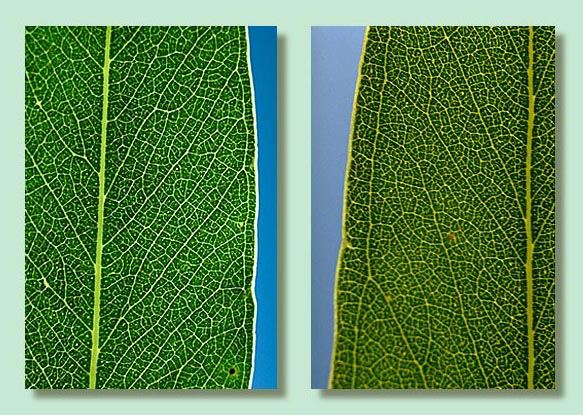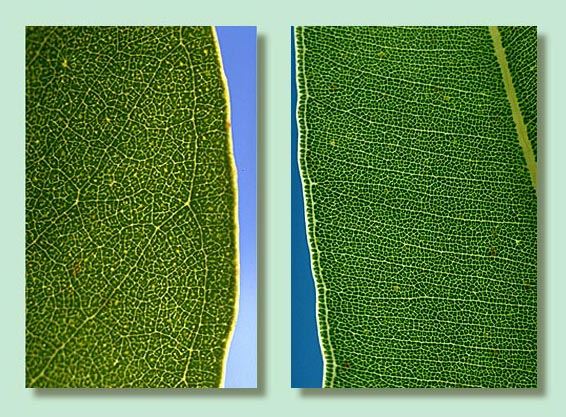In most species of eucalypts a leaf vein network is made up of the midrib (primary vein), side veins (secondary veins) and a mass of linking veins (veinlets - tertiary and quaternary veins). The strength and thickness of the veins diminishes from the primary (midrib) to the tertiary and quaternary veins (veinlets), if present.
In a very few species the vein network consists of no more than the midrib, the intramarginal vein and a few obscure side vein fragments.
Assess mature adult leaves with a handlens whilst holding the leaf up to a strong light (sunlight is best).
Sparsely reticulate
Little venation is present beyond the side veins (e.g. Eucalyptus mckieana), or the side veins are obscure or absent (e.g. E. depauperata).
Moderately reticulate
A network of minor veins joins the side veins (e.g. Eucalyptus articulata). There may be some further veining, often with "dead ends" (a veinlet leaves another veinlet and does not connect with any other, ie. ending in a space, e.g. E. diversifolia). Basically, the leaf in this category is divided into large, unveined “green” areas. These unveined areas are the areoles.
Densely reticulate
The whole leaf area is divided into a dense network, with few or no "dead ends", producing a mass of small, uniform areoles (e.g. E. cosmophylla).
Very densely reticulate
The whole leaf area is divided into a dense network of minute areoles, often less than 1mm across. This patterning is seen in many tropical species (e.g. Corymbia clarksoniana ) and some boxes (e.g. E. dawsonii).









